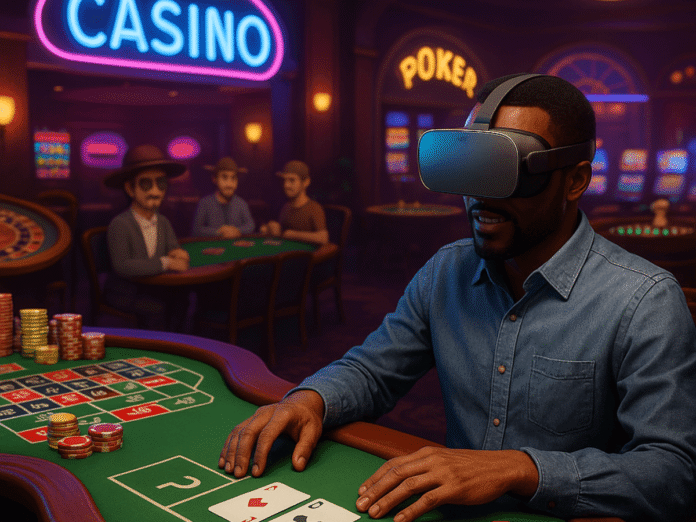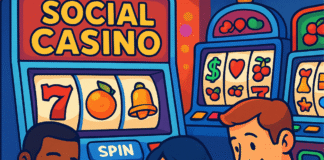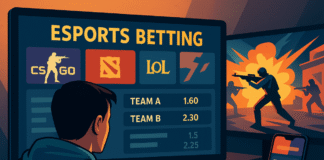Virtual and augmented reality are transforming how we play, socialize, and experience entertainment—and now they’re reshaping the casino world too. What was once a futuristic concept is becoming tangible, with immersive poker tables, interactive slot machines, and fully realized virtual casino floors. In the next few years, the line between “real” and “virtual” gambling will blur even further.
This article explores the current state of VR and AR casinos, what’s coming in the next 2–5 years, and how the user experience (UX) of gambling will evolve in this brave new digital world.
The Casino Experience Reimagined
Immersion Over Imagination
Traditional online casinos already offer convenience, but they lack the feeling of being there—the sounds of chips clinking, the buzz of conversation, and the thrill of reading an opponent’s body language. VR (Virtual Reality) brings this back by placing players inside lifelike casino environments. When you put on a headset, you can walk up to a poker table, pull up a chair, handle virtual cards, and interact with other players as if you were standing in Las Vegas.
AR (Augmented Reality), on the other hand, blends digital elements into your physical surroundings. Imagine sitting at your kitchen table, and with a tap, a 3D blackjack table appears in front of you. Your cards float above the surface, and a digital dealer greets you by name.
These immersive experiences turn solitary online gambling into something deeply social, tactile, and cinematic.
What Exists Today
Social VR Casinos
Currently, most VR casinos operate in the “social” category—players use in-game tokens or virtual chips rather than real money. The most popular example is Vegas Infinite by PokerStars, a VR experience where users can play poker, blackjack, roulette, and slots in stunningly rendered 3D environments. It’s available on platforms like Meta Quest and Steam and focuses on interaction and community rather than gambling profits.
Other early experiments, like SlotsMillion, introduced the first VR casino back in 2015, combining traditional online gambling with immersive environments. Though rudimentary compared to modern titles, it proved the concept worked—and that players were hungry for immersion.
Live Dealer Games (2D Meets 3D)
Many top live-casino providers like Evolution and Playtech have mastered live streaming of real dealers to online players. While these games remain primarily 2D, they’re the stepping stones toward full VR integration. Some companies are already experimenting with 3D lobbies, immersive camera angles, and spatial sound effects that make the experience feel almost physical.
Early AR Experiences
With the release of mixed-reality devices like the Apple Vision Pro and Meta Quest 3, augmented casino games are starting to appear. Apps such as Vision Blackjack demonstrate how AR can turn a living room into a casino floor. While these are still “for fun,” they showcase how quickly AR technology is advancing toward practical, lifelike play.
What’s Coming in the Next 2–5 Years
- Mixed-Reality Tables and AI Dealers
In the near future, you’ll be able to place a digital poker or blackjack table anywhere in your room using AR. These games will blend live human dealers with advanced AI hosts capable of reading your gestures, explaining rules, and even cracking jokes. Thanks to real-time rendering and spatial computing, your dealer could appear life-sized, responding naturally to voice and motion.
- True Social Presence and Persistent Worlds
Today’s VR casinos already have communities, but the next generation will introduce table culture. Players will return to the same virtual lounges, sit with familiar faces, and maintain persistent identities and reputations. Avatars will become more expressive, using eye tracking and realistic hand gestures, turning every poker face into a story.
- On-Property AR Experiences
In physical casinos, AR will become a key part of guest experience. Through your phone—or eventually, lightweight AR glasses—you’ll be able to see digital overlays guiding you to restaurants, showing live table stats, or displaying personalized offers floating in the air above the slot floor. The integration of loyalty programs and real-time data will make these experiences seamless and interactive.
- Regulatory Evolution and Secure Identity
For VR gambling to involve real money, regulatory frameworks must evolve. In the coming years, expect new verification systems tailored for immersive environments—facial recognition, biometric IDs, and geofencing that can determine if you’re in a legal region for play. Compliance overlays will appear naturally in your field of view, maintaining immersion while ensuring player safety.
- The Rise of Game Shows and Live Events
While poker remains iconic, the fastest-growing category in online gaming is live game shows—high-energy, visual experiences where players participate in real-time. In VR and AR, these will become full-fledged productions with holographic hosts, interactive stages, and audience participation. Imagine standing in the middle of a “Crazy Time” wheel, seeing it spin around you, and hearing the crowd cheer.
- Enhanced Safety and Responsible Play
Immersion amplifies excitement—but it can also blur awareness of time and money spent. Future casino environments will use subtle design cues for responsible play: the lighting may dim when you’ve been playing too long, or an AI assistant may gently remind you of limits. These features will be built into the environment, not tacked on.
The Future of Casino UX
The UX of gambling is shifting from buttons and menus to natural movement and conversation. In VR and AR casinos, your body is the interface: picking up chips, gesturing to bet, nodding to fold. Every sensory element—sound, lighting, motion—can now reinforce emotion and tension.
Next-generation casinos will focus on:
Instant onboarding: First-time players can learn by doing, guided by AI dealers.
Accessibility: Adjustable table heights, voice commands, and visual aids for players with disabilities.
Cross-device continuity: Start a session on mobile, continue on a headset, and track progress across devices.
Community moderation: AI-driven systems will detect toxic behavior, ensuring safe and respectful interactions.
Challenges Ahead
Despite the excitement, several obstacles remain:
Hardware limitations: Headsets are improving rapidly but still need to become lighter and more comfortable for long sessions.
Motion sickness and latency: For fast-paced games like craps or roulette, maintaining low latency is critical to prevent disorientation.
Legal barriers: Until regulators catch up, real-money VR casinos will be restricted to controlled markets.
Ethical design: As immersion deepens, ensuring responsible play and data privacy becomes even more important.
The Road to Reality
The coming years will see VR and AR casinos evolve from social playgrounds to fully-fledged entertainment ecosystems. Whether you’re playing a casual round of blackjack at home through AR or sitting in a virtual Vegas penthouse with friends across the globe, the boundary between gaming and reality will keep fading.
In short, virtual gambling isn’t just the future—it’s already here. And as technology matures, it will redefine not only how we play, but how we connect.
Sources:














